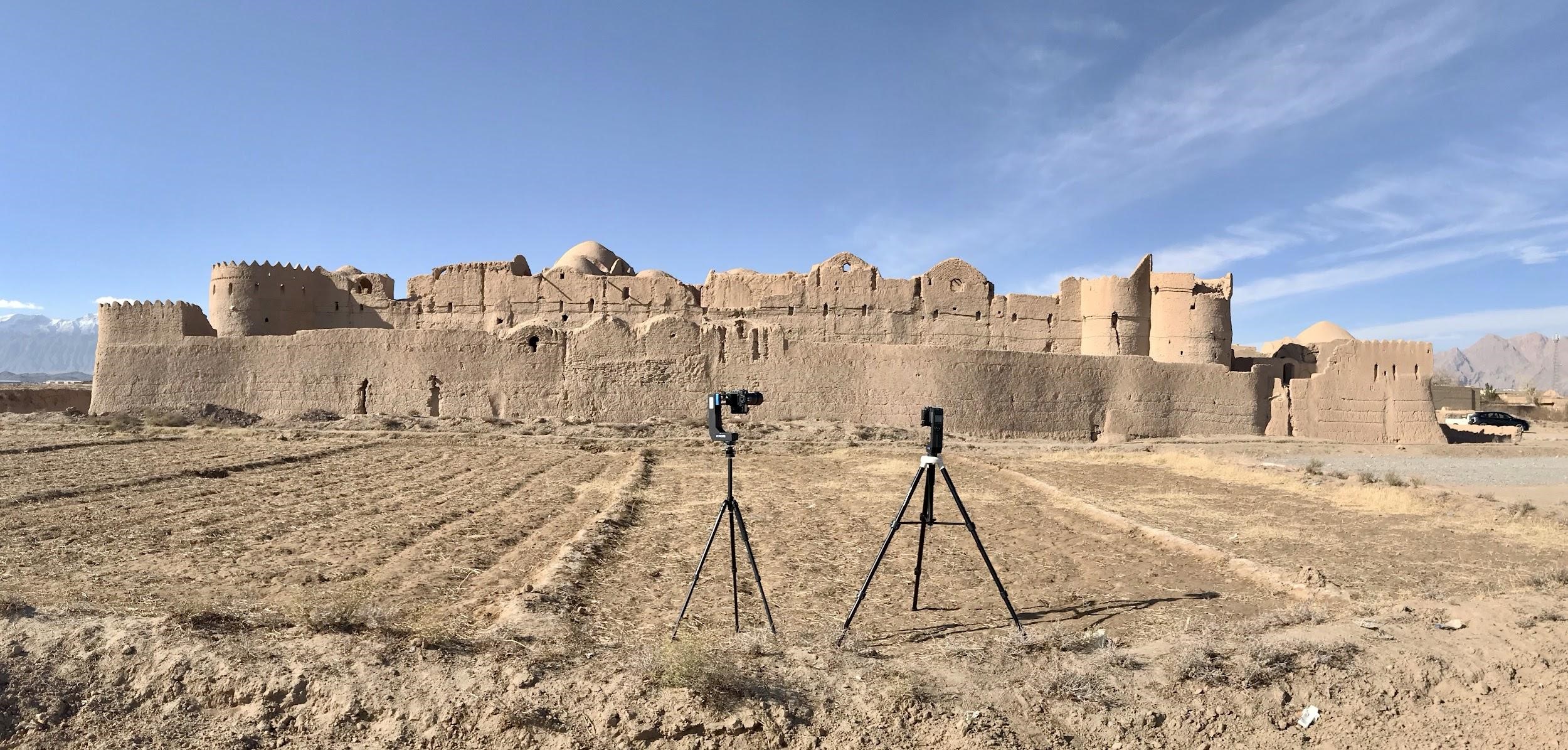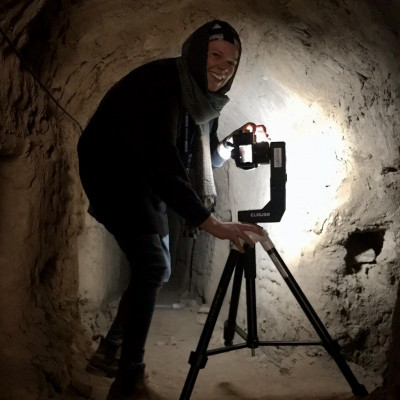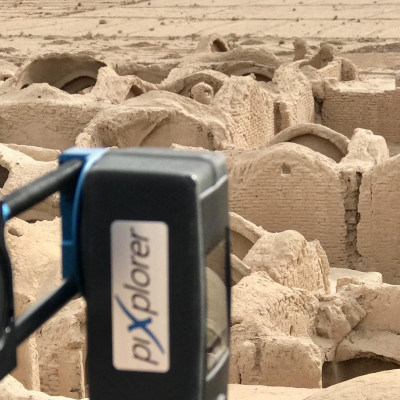
Digital Saryazd, Iran
In December 2019, the private philanthropic Seaton Foundation carried out a project to digitally document Saryazd Castle. The aim was to document the castle in its current state for conservation and preservation purposes. In addition, the images can also be used for research purposes by scientists who are unable to visit the site.
Contribution by Dr. Kristy-Lee Seaton and Dr. Miglena Raykovska

The village of Saryazd is located in central Iran, around 50 km from the historic city of Yazd. Thanks to a constant water supply and fertile farmland, it was once the largest village in Yazd province. Today, the village has only a small resident population and an influx of weekend visitors. One of the tourist attractions is the castle of Saryazd. The castle, which was never the seat of a ruler, was built as a citadel where the local population could take refuge in times of need. The date of construction is generally dated to the Sassanid period (3rd to 7th century AD). However, the village of Saryazd is said to have been established in the 8th century. The earliest evidence of the castle dates back to the Al-Mozafar dynasty in the 14th century, with further additions during the Safavid dynasty in the 15th and 16th centuries. Based on the architectural typology, a dating to the Samani era (9th to 10th century) has also been suggested.

The castle of Saryazd is a citadel surrounded by a moat with a single entrance via a drawbridge. The fortress consists of an inner and an outer fortress wall as well as defensive towers. It consists of three floors with an estimated 1500 rooms. Most of the upper floors have disappeared, so the number of rooms is probably closer to 850 based on the surviving evidence. The rooms were primarily used to store valuables such as grain.
Iran's architectural heritage consists primarily of adobe buildings, which are still a common construction technique today. Residential complexes, caravanserais and defensive housing complexes such as Saryazd protected communities from the dangers of natural forces, animals and human threats. These buildings, scattered throughout Iran, have a similar functionality, layout and style. Unfortunately, despite their importance to Iran's cultural heritage, they are insufficiently studied by scholars.
The Saryazd Fortress was visited and digitized by Dr. Seaton and Dr. Raykovska between 8 and 17 December 2019. During the entire project, a total of 30,428 photos were taken, including five gigapixel panoramas and 78 360º panoramas. The evaluation and processing of the total data volume of 268 GB took approximately 98 hours.

The work in Saryazd was associated with various challenges. The site looks and feels like a labyrinth. The corridors are very narrow. Access to most of the rooms is complicated and even dangerous in some places. Reliable equipment that is easy to move, protected from dust and can be activated remotely makes archaeological work much easier.
Most of the storage rooms in Saryazd have no access to light, especially those on the first floor. HDR photography is the only way to capture the significant differences in light in such an environment. The timeframe for the project was also a challenge: only ten working days, including site survey, photography, photogrammetry and processing time.
In order to achieve the best results in such an environment, the team worked with two systems from the manufacturer CLAUSS: "piXplorer" and "piXplorer 5oo". Both robots are characterized in particular by speed, precision and broad exposure compensation. The piXplorer was used for gigapixel photography and was therefore equipped with a Nikon D500 camera and a lens with a focal length of 105mm. The panorama tripod from CLAUSS, specially designed for these applications, provided sufficient stability.

The piXplorer is relatively light, small and easy to handle. It requires manual adjustment without parallax, but the setting can be saved for up to 10 different lenses. The piXplorer is fast, and the battery lasts for up to 100 panoramas per day after being charged overnight. A total of five gigapixel panoramas were created. These images show the outer walls of the fortress, once from each direction and one with a view of the roof of the north tower.
Cultural heritage professionals, architects, archaeologists and conservators, can use the images to view the condition of the site at the time of recording. This can help in the detection of cracks and the analysis of other structural pathologies.
The piXplorer 5oo was used for the 360-degree virtual tour because it offers high accuracy (no stitching errors), high resolution (512 Mpx), high speed and, above all, the ability to take pictures in complete darkness. The integrated light can be set to different strengths, and experience has shown that it works effectively even at half power in the darkest rooms.
The team used the "piXplorer 5oo" software included with the system for HDR processing and 360-degree panorama stitching. Each panorama took around 7 minutes to process (Intel i9-9880H, 64 GB RAM).
A total of 78 panoramic views were created. These are 18 panoramas of the outer walls of the fortress and 60 interior panoramas. The panoramas were inserted into a virtual tour, which is made available via a website. The tour contains all the panoramas taken. There are also still images taken during the project. Further texts or audio files can be added at a later date to expand the offer.
